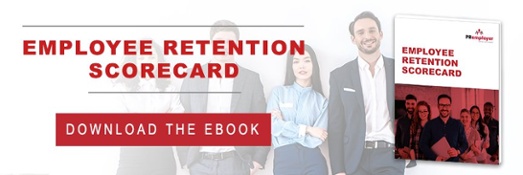
Onboarding is a crucial stage of your hiring and recruitment process. New employees are naturally more uncertain and less productive. They must learn the basics of their work, get used to a new routine, and meet new coworkers. If onboarding does not go smoothly, that transition can be confusing, leaving them spinning their wheels.
At its best, a genuinely effective onboarding process is so seamless that your new hire or existing staff will barely notice it.
Understanding Onboarding
Onboarding is the stage of the recruitment process that falls between initial recruitment and training, although many companies include training with onboarding. Depending on the role's complexity, it can take up to a year for new hires to become productive.
That first few days or a week, however, is a crucial part and what our focus is here. We are talking about the time between accepting an offer and starting to perform duties, the paperwork, and other things that need to happen before somebody can sit down at their desk and work.
The Steps of Onboarding
An ideal onboarding process completes as many tasks as possible before the employee's first day. That allows the company to focus on training, mentoring, and giving appropriate support while they learn their role. This critical phase of onboarding includes:
- The required forms. New employees must fill out a W-4 and an I-9, benefit application forms, direct deposit for payroll, etc. Completing this electronically before they come to the office (if they're coming to the office) can save a lot of time on the first day.
- Setting up their desk, phone, and computer. Traditionally, many companies have done this when the person arrives. However, you can complete that before they get there. You can set things up so they can walk over to their desk (and already know where it is), sit down, and start training immediately.
- Making sure they have IT access. Employees must be able to do their jobs, and ensuring their computer has all the necessary software helps them do so.
- Answering all their questions. If you are assigning a mentor, do so before the first day, as soon as possible after they accept your offer, and have that person proactively contact them so that if they prefer to ask a person, one is available. You can also send them an FAQ.
Taking them out to lunch with the team on their first day is a good idea. If hiring remotely, consider sending a care package with coffee, tea, candy, a branded mug, or something similar.
Creating A Smoother (and Safer) Process
Onboarding has many steps, such as properly filing paperwork for compliance and other reasons. Furthermore, you must correctly log all information, set up employee data, and guarantee privacy at every stage of the process.
Any errors made poses a significant risk. You may end up out of compliance, giving an employee incorrect benefits and pay (or not be clear about, for example, the cost of benefits). That can incur fines and lawsuits or increase turnover. Employees who get a bad first impression will likely start shopping their resume again.
Online onboarding is an easy solution. It allows employees to input their information directly, resulting in fewer errors because they input everything themselves. The employee can do it from home, regardless of whether they will be working remotely or not, which means everything can be in order before their start date. That reduces the risk of error because people know their personal information best and will be less likely to make mistakes with their numbers and addresses. Having them fill out a paper form, then having an existing staff member input that into the system later increases the risk of typos and makes checking accuracy more time-consuming. If any errors arise, you can know your company did not make them, reducing your company's liability.
Set Up Employees to Become Productive Quickly
Some loss of productivity is inevitable with any new hire due to the effort of transitioning into the role. However, a smooth onboarding process can get crucial tasks handled quickly and reduce the time the employee spends on setup or waiting for somebody else to finish a piece of the puzzle.
They can then focus more on training, learning their way around the office, and meeting other team members. Companies can set up training materials to provide productive work for their first few days. Establishing a support network that lasts at least six months helps employees get up to speed and feel welcomed and appreciated. A mentor or buddy system can be beneficial here, giving the new hire a consistent person they can turn to with any questions or problems.
That reduces the "ramp-up" time that gets the employee productive, making their learning process much more efficient. It also reduces the risk of them quitting right as you get them up to speed, forcing you to start over with a new hire.
Make Onboarding More Efficient with a PEO
The easiest way to streamline onboarding form-fills and develop robust training procedures is to partner with a professional employer organization (PEO). A PEO has developed systems over the years, learned from a variety of clients, and can also afford enterprise-level HR software that makes tasks more manageable. They can act as a counselor, offering guidance in addition to best practices to help you learn what to do and set up a system for all future hires. Partnering with a PEO can help you quickly get new hires up to speed and grow your company in many other ways.

